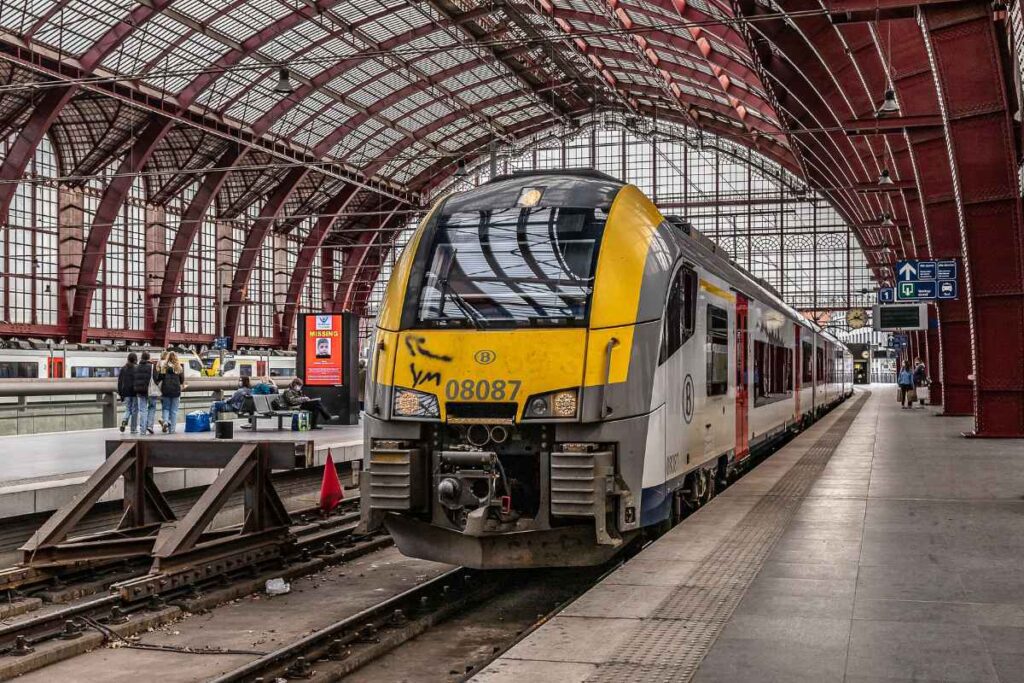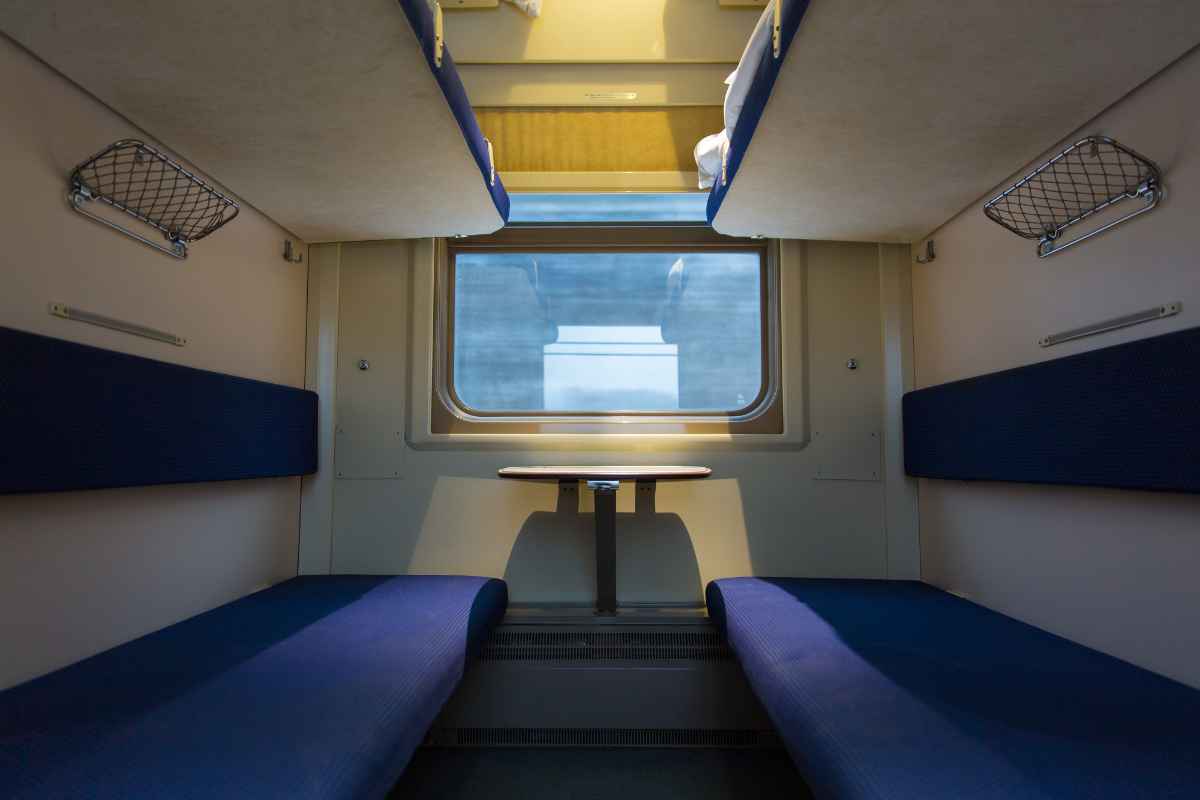Sleeper Trains and Ferries: Fly Less, See More

In today’s fast-paced world, the convenience of flying has made air travel the go-to option for many people. However, with increasing environmental concerns and a desire for a more immersive travel experience, many are turning to alternative forms of transport.
Sleeper trains and ferries are becoming popular choices for travelers who want to reduce their carbon footprint and explore the world in a more leisurely, scenic way.
This article will explore the benefits of choosing sleeper trains and ferries over flying, and why they offer a unique and enriching way to see more of the world.
The Rise of Slow Travel
The modern world often moves at a breakneck pace, with long-haul flights and quick getaways taking the spotlight.
However, the concept of slow travel has been gaining traction in recent years, encouraging people to take a step back and enjoy their journey as much as the destination.
Slow travel advocates for deeper connections with places, cultures, and people, rather than rushing through airports and cramming multiple destinations into one trip.
Sleeper trains and ferries provide the perfect opportunity for slow travel, offering a more relaxed pace and a chance to witness breathtaking landscapes that would otherwise be missed when flying.

Environmental Benefits of Traveling by Train and Ferry
One of the main reasons many travelers are ditching the plane in favor of sustainable travel options like sleeper trains and ferries is the environmental impact of air travel.
Airplanes contribute significantly to greenhouse gas emissions, with aviation accounting for about 2-3% of global CO2 emissions. Train travel, on the other hand, is one of the most environmentally friendly modes of transport, especially when compared to air travel.
In many countries, ferries also provide a more sustainable alternative to planes. Whether you're crossing a short distance or traveling between islands, ferries are an efficient and lower-emission option.
By choosing slow travel methods like sleeper trains and ferries, travelers can significantly reduce their carbon footprint while still enjoying their journey.
A Comfortable and Scenic Journey
One of the most significant advantages of sleeper trains is the comfort they offer. Instead of spending hours confined in a small airplane seat, sleeper trains allow you to stretch out and relax in a comfortable bed as you travel overnight.
Many sleeper trains, such as those in Europe and Asia, offer private cabins with beds, fresh linens, and even en-suite bathrooms, making the experience feel like a cozy hotel on rails.

 10 Simple Eco-Friendly Lifestyle Tips to Start Living Green Today
10 Simple Eco-Friendly Lifestyle Tips to Start Living Green TodayThis level of comfort not only makes the journey more enjoyable but also allows you to arrive at your destination well-rested, ready to explore.
As the train moves through scenic landscapes, you’ll have the chance to admire rolling hills, dense forests, and picturesque villages from the comfort of your cabin.
The slow, steady motion of the train provides the perfect backdrop for unwinding and taking in the natural beauty of your surroundings. This is a far cry from the sterile, cramped environment of an airplane cabin.
The Magic of Ferries
Ferries, too, offer a unique experience. Whether you’re crossing a river, a channel, or the open sea, ferries provide the perfect opportunity to connect with the water and the elements.
Unlike airplanes, which keep you high above the earth, ferries offer expansive views of the sea, coastlines, and islands you’re traveling to or from. On a clear day, you might catch a glimpse of dolphins swimming in the wake or spot a distant island on the horizon.
Ferries also allow you to explore multiple destinations in a way that air travel simply can’t match.
For example, in regions like the Mediterranean or Scandinavia, ferries connect an archipelago of islands, making it easy to hop between unique destinations while enjoying the journey itself.

A More Authentic Experience
Flying often involves the rush of security checks, waiting at gates, and squeezing into a seat for a few hours of discomfort. In contrast, train travel and ferries encourage a more relaxed, enjoyable experience.
By opting for sleeper trains, you can embrace the romance of old-world travel—a chance to unwind, meet fellow travelers, and immerse yourself in the experience of moving from one place to another.
Train stations, often located in the heart of cities, are gateways to exploring the culture of the area you’re visiting.
In Europe, the allure of classic luxury trains like the Orient Express offers a taste of glamour and nostalgia, while other routes take you through remote areas with rich historical significance.
Similarly, ferry travel encourages a sense of adventure and connection with the sea. You’ll find yourself chatting with locals, experiencing the rhythm of life on the water, and discovering hidden gems along coastlines that would be inaccessible by plane.
Whether you’re traveling to the Greek islands, the coastal towns of Norway, or the fjord regions of New Zealand, ferries offer a deeper connection with the landscape and a unique perspective on the journey.
Sleep and Arrive Refreshed

 10 Simple Eco-Friendly Lifestyle Tips to Start Living Green Today
10 Simple Eco-Friendly Lifestyle Tips to Start Living Green Today 5 Common Myths About Eco-Friendly Living Debunked
5 Common Myths About Eco-Friendly Living DebunkedOvernight sleeper trains have the added benefit of allowing you to travel while you sleep. This means you can save on accommodation costs and wake up at your destination, ready to start your day.
The ability to go to bed in one place and wake up somewhere entirely new is one of the most appealing aspects of sleeper train travel.
Long-distance trains in countries like Russia, India, and Switzerland have perfected the art of overnight travel, offering clean and comfortable cabins where you can sleep, eat, and socialize while traveling.
Likewise, some ferry routes allow for overnight travel, making it possible to explore multiple destinations over the course of one journey.
The peaceful motion of the ferry, combined with the sound of water lapping against the sides, creates a serene atmosphere that makes it easy to relax and rest as you cruise toward your next adventure.
Cost-Effective and Practical
While sleeper trains and ferries may not always be as fast as flying, they can often be more cost-effective in the long run. Many sleeper trains offer all-inclusive packages that include meals, accommodation, and even guided tours.
This can make them a more affordable option than flying, especially when considering the additional costs of food, checked luggage, and accommodation that come with air travel.

Ferries are also an affordable alternative to flying, particularly for short-distance travel.
Whether you’re hopping between islands in Greece or exploring the Norwegian coast, ferry fares are typically much lower than the cost of flying, and you have the added bonus of scenic views along the way.
Embrace the Journey
In conclusion, choosing to travel by sleeper trains and ferries is not just about reducing your environmental impact, it’s also about embracing the journey.
Whether you’re marveling at the countryside from a train window or soaking in the sights and sounds of the sea from a ferry deck, these slow forms of travel offer an enriching and comfortable alternative to flying.
They encourage deeper connections with the places you visit, provide a more authentic experience, and allow you to see more of the world in a more sustainable way.
So, the next time you plan a trip, why not choose the scenic route? Fly less, see more, and let the journey become as exciting as the destination.
Did you find this post useful or inspiring? Save THIS PIN to your ECO Board on Pinterest! 😊
Related reading: 10 Simple Eco-Friendly Lifestyle Tips to Start Living Green Today
10 Simple Eco-Friendly Lifestyle Tips to Start Living Green Today 5 Common Myths About Eco-Friendly Living Debunked
5 Common Myths About Eco-Friendly Living Debunked How to Reduce Your Carbon Footprint with Ethical Consumerism
How to Reduce Your Carbon Footprint with Ethical Consumerism

